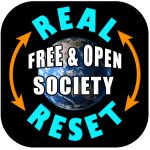[ad_1]

As individuals slowly emerge from the fog that descended on them in March 2020, the sense of disorientation and anxiety is palpable. Some of those who took part in the fanaticism and bullying are rewriting or memory-holing what they actually said and did. Others have proposed a pandemic amnesty, as if everyone is just waking up after a drunken night and vaguely remembered they did some stuff they probably shouldn’t have, but hey, it was all well-intended. Everyone makes mistakes so let’s just move on.
What actually happened to the millions of people who kept the covid circus going? What forces were operating on their minds that are now finally starting to recede? Will another madness descend, and if so, why and when?
In his book, The Psychology of Totalitarianism, professor of clinical psychology Matthias Desmet talks about ‘mass formation,’ a phenomenon historically given the moniker ‘crowd formation.’ Desmet claims that most of the world population coalesced into a crowd in the early part of 2020. The narrative of that crowd came to dominate the public sphere, the political sphere, and the private sphere, making it classically ‘totalitarian,’ an event Desmet puts in a broad historical and technological perspective. The issues he raises are fundamental for understanding what is likely to happen next, and for charting our own roles as members of Team Sanity in the next few years.
Crowds formed in early 2020
Desmet’s central thesis is one with which we wholeheartedly agree, and it is nearly identical to what appears in our own writings: the populations of many countries became crowds in February-March 2020, obsessed with seeking protection from a new virus. The elites responded to the call for sacrifice and safety by issuing propaganda and ordering health rituals that were eagerly embraced and amplified by their populations. People abandoned their individuality and critical thinking, using their minds not to question the totalitarian controls that removed their basic freedoms, but to rationalise and evangelise them.
In describing how individuals think and behave in these crowds, Desmet draws on centuries of sociological thought, including the works of Elias Canetti, Gustav Le Bon, Hannah Arendt, and particularly the Frankfurt School. He admitted in his July 2022 interview with John Waters (and again in a nearly identical interview with Tucker Carlson in September 2022) that it took him a few months in 2020 to recognise that crowds had formed. We too only recognised the crowd formation several months into the madness, in about June 2020. It had been so long in the West since this phenomenon occurred on this scale that the very possibility seems to have slipped out of our collective consciousness. We know of no commentator who identified the crowd formation right at the start and wrote about it.
Although the covid crowds are now slowly dispersing, the damage is so great and the lessons that humanity’s actions during this period have taught us are so unpalatable and challenging that they send a shudder through those of us who didn’t participate.
The population led the government, not the other way around
One key implication of the crowd dynamic is that there is no single culprit, no head of the snake, no enemy that planned the covid saga ages ago. In crowds, both the population and its leaders get caught in the maelstrom of the adopted narrative, dragging them all into a wild ride that, unlike a ride in an amusement park, has no predictable pathway or ending. Yes, the elites take on the roles of jailers and autocrats, but these are roles demanded of them by their own populations. Should they refuse to play as requested, they would quickly be cast aside and replaced by others who are prepared to do the business. As Desmet points out, removing any part of the elites would have made no difference, as it would make no difference now.
[ad_2]
Source link
